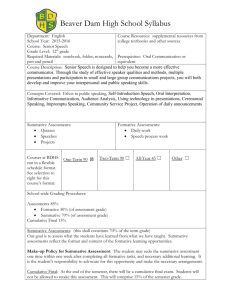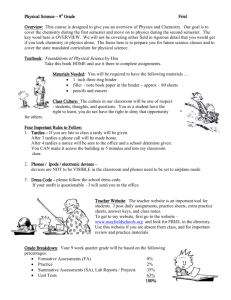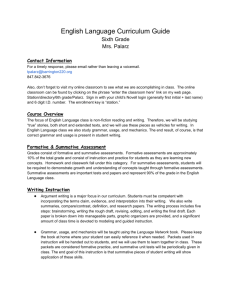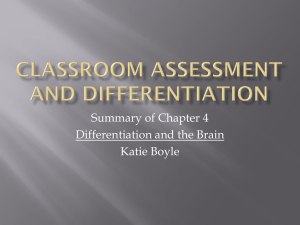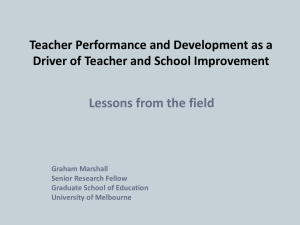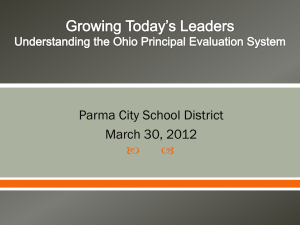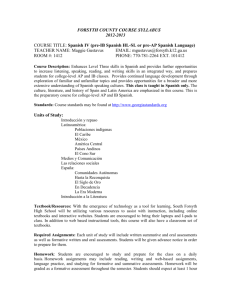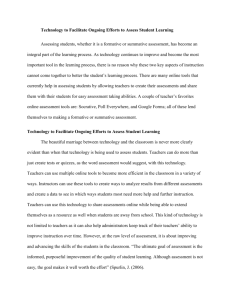Formative and Summative Assessment Menu
advertisement
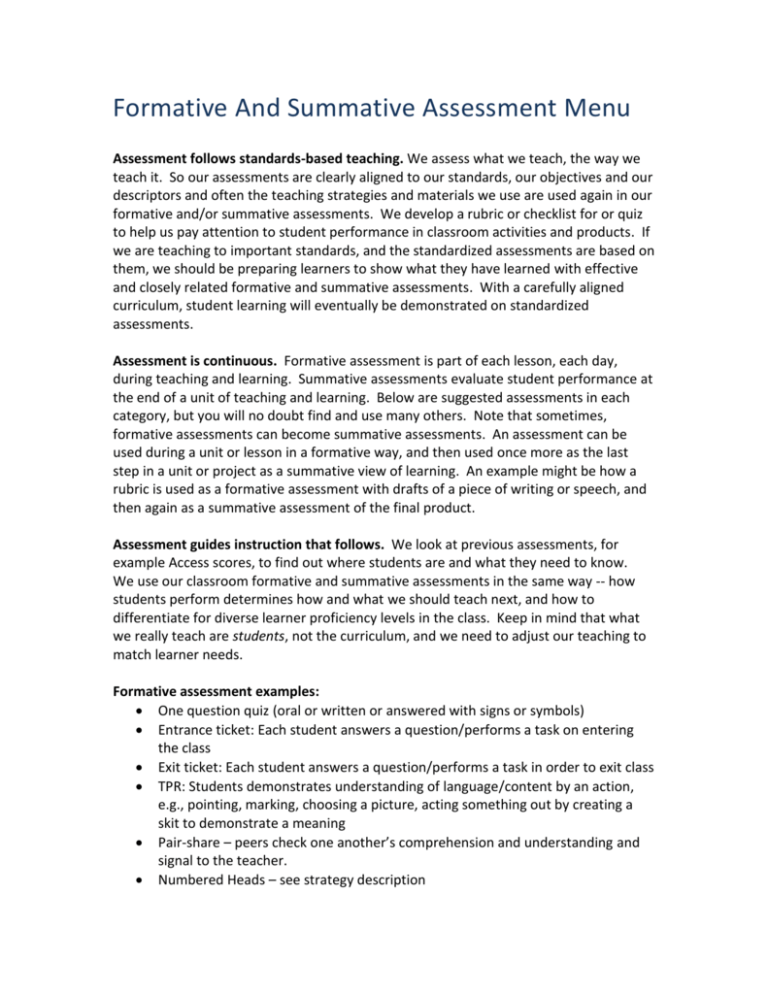
Formative And Summative Assessment Menu Assessment follows standards-based teaching. We assess what we teach, the way we teach it. So our assessments are clearly aligned to our standards, our objectives and our descriptors and often the teaching strategies and materials we use are used again in our formative and/or summative assessments. We develop a rubric or checklist for or quiz to help us pay attention to student performance in classroom activities and products. If we are teaching to important standards, and the standardized assessments are based on them, we should be preparing learners to show what they have learned with effective and closely related formative and summative assessments. With a carefully aligned curriculum, student learning will eventually be demonstrated on standardized assessments. Assessment is continuous. Formative assessment is part of each lesson, each day, during teaching and learning. Summative assessments evaluate student performance at the end of a unit of teaching and learning. Below are suggested assessments in each category, but you will no doubt find and use many others. Note that sometimes, formative assessments can become summative assessments. An assessment can be used during a unit or lesson in a formative way, and then used once more as the last step in a unit or project as a summative view of learning. An example might be how a rubric is used as a formative assessment with drafts of a piece of writing or speech, and then again as a summative assessment of the final product. Assessment guides instruction that follows. We look at previous assessments, for example Access scores, to find out where students are and what they need to know. We use our classroom formative and summative assessments in the same way -- how students perform determines how and what we should teach next, and how to differentiate for diverse learner proficiency levels in the class. Keep in mind that what we really teach are students, not the curriculum, and we need to adjust our teaching to match learner needs. Formative assessment examples: One question quiz (oral or written or answered with signs or symbols) Entrance ticket: Each student answers a question/performs a task on entering the class Exit ticket: Each student answers a question/performs a task in order to exit class TPR: Students demonstrates understanding of language/content by an action, e.g., pointing, marking, choosing a picture, acting something out by creating a skit to demonstrate a meaning Pair-share – peers check one another’s comprehension and understanding and signal to the teacher. Numbered Heads – see strategy description Question-Answer-Relationship (QAR) – see strategy description Graphic organizer – see strategy descriptions Cooperative Sentences – see strategy descriptions Teacher observation of student product or performances using a rubric or checklist Self or peer assessment of product or performance with rubric Word sort Personal dictionary or other product check Spelling or vocabulary or content quiz Close passage of text (with key words left out for students to complete, with or without word list) based on current learning Student assessment of appropriateness of an independent reading (with, e.g., the five finger test) Student self-rating of their levels of knowledge of terms or concepts on a scale Vocabulary Profiler analysis of learner writing Students distinguish between examples and non-examples Students/teacher use editing checklists and rubrics for writing Students keep and teacher checks running record of progress in a chart in the writing folders Teacher-kept records of participation, attendance, task completion Summative assessments: Student product or performances (e.g., writing, speaking, video, web task, lab notebook, personal dictionary, problem-solving, book talk, dialogue…) assessed with rubric, checklist or other guidelines that are clear to the learner and teacher Observation of student oral performance with rubric Assessment from Study Island Teacher paper and pencil test based on standards, objectives, and descriptors Tools like Socrative and tools available through Edmodo -- used to administer teacher-made online assessments that give immediate feedback to learners.

